- Joined
- Oct 22, 2018
- Messages
- 136
- Points
- 253

Pinky schooners, a common type of New England fishing vessel, sailed from local Cape Ann ports from the early 18th century to the early 20th century. In 1839, there were 64 registered pinky schooners in Cape Ann and its district. Pinkies were generally small boats from which men fished overboard, and were known for their seaworthiness. These distinctive-looking vessels were so common that viewing many marine paintings of the period usually shows one or two pinkies in the background, as is the case in many of the works by the painter Fitz Henry Lane on view in the National Gallery of Washington, D.C.
These little fishing schooners could be crewed by just a couple of men, unlike some of their larger sister ships that plyed the waters of Bath and other Maine shipbuilding cities. The term "pinky" comes from the stern of this type of schooner, which is sharp and raised. Its origin goes back to the European fishing boats of the 17th century, which inspired the boats that were in use in North American waters before the American Revolution, initially known as chalupas, from which the chebacco boats were born, which could have a square stern or pointed. They had two masts and a crude cabin with bunk beds and a brick stove, as well as a fishing hold below decks. The pinky was a slightly larger chebacco boat with schooner rig. There are depictions and models of pinky hulls dating back to the early 18th century, although much of what is known of these ships comes from Lane's aforementioned paintings.
The pinky was well adapted to ocean fishing and could venture from shore to outer waters. In 1873, a publication called The Fisherman's Memorial described them thus: “These little ships, owing to their extreme buoyancy and offering so little resistance to the power of the ocean waves, perform comparatively well at times when the larger ships are working, sinking and tensioning each plank and wood to its maximum resistance capacity. They ride almost level keel on the crests of the highest waves and settle in the hollows with the ease and grace of a wild duck.” The pinky fisherman usually fished from the side of the boat with nets, or with lines and hooks. Although the pinky had a long career, it fell out of use at the beginning of the 20th century, like most other work vessels. But because of her good looks and good behavior, and also her place in Maine history, some have been restored and continue to sail while new ones are being built today.
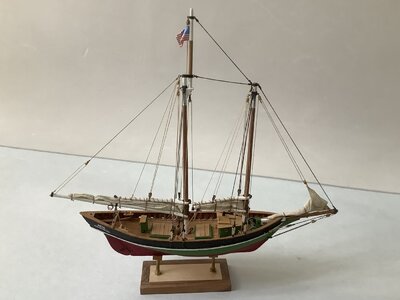
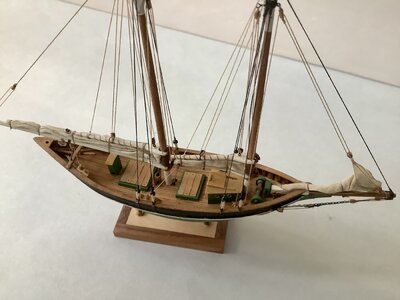
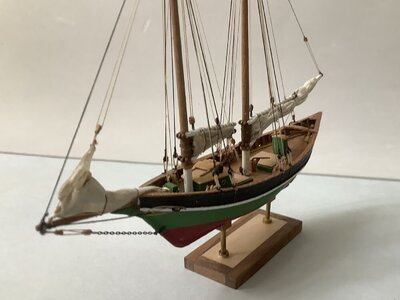
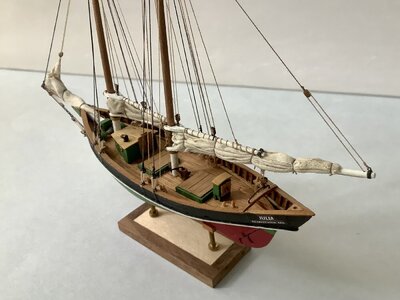
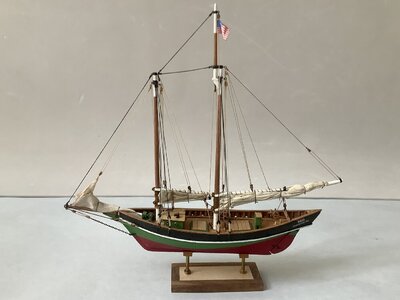
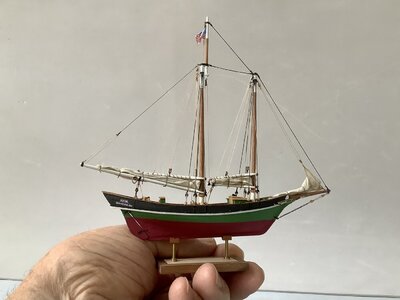
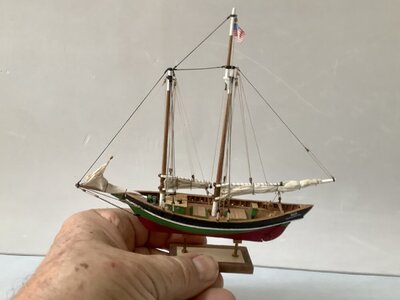
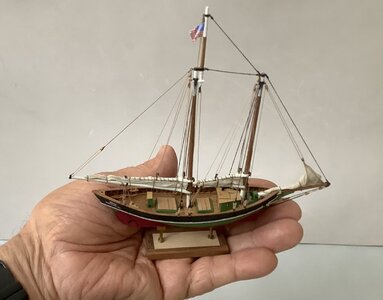
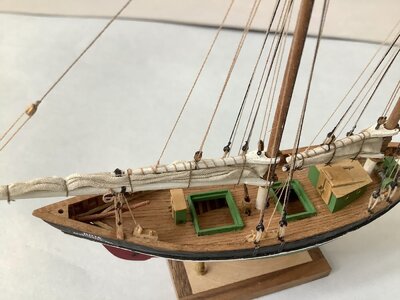
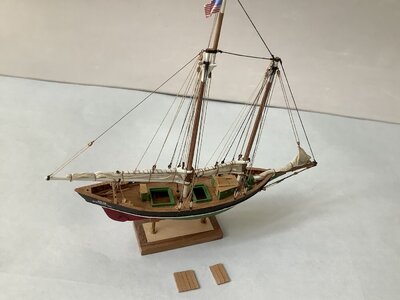
These little fishing schooners could be crewed by just a couple of men, unlike some of their larger sister ships that plyed the waters of Bath and other Maine shipbuilding cities. The term "pinky" comes from the stern of this type of schooner, which is sharp and raised. Its origin goes back to the European fishing boats of the 17th century, which inspired the boats that were in use in North American waters before the American Revolution, initially known as chalupas, from which the chebacco boats were born, which could have a square stern or pointed. They had two masts and a crude cabin with bunk beds and a brick stove, as well as a fishing hold below decks. The pinky was a slightly larger chebacco boat with schooner rig. There are depictions and models of pinky hulls dating back to the early 18th century, although much of what is known of these ships comes from Lane's aforementioned paintings.
The pinky was well adapted to ocean fishing and could venture from shore to outer waters. In 1873, a publication called The Fisherman's Memorial described them thus: “These little ships, owing to their extreme buoyancy and offering so little resistance to the power of the ocean waves, perform comparatively well at times when the larger ships are working, sinking and tensioning each plank and wood to its maximum resistance capacity. They ride almost level keel on the crests of the highest waves and settle in the hollows with the ease and grace of a wild duck.” The pinky fisherman usually fished from the side of the boat with nets, or with lines and hooks. Although the pinky had a long career, it fell out of use at the beginning of the 20th century, like most other work vessels. But because of her good looks and good behavior, and also her place in Maine history, some have been restored and continue to sail while new ones are being built today.













